Key takeaways
- Peer feedback enhances musical understanding by providing new perspectives and emotional insights, beyond just technical criticism.
- Choosing trusted peers for feedback is crucial; their balanced input can challenge and inspire without discouragement.
- Utilizing various feedback collection methods, such as structured forms and voice notes, fosters deeper insights into music projects.
- Effective incorporation of feedback involves balancing suggestions with the original artistic vision, promoting creative exploration.
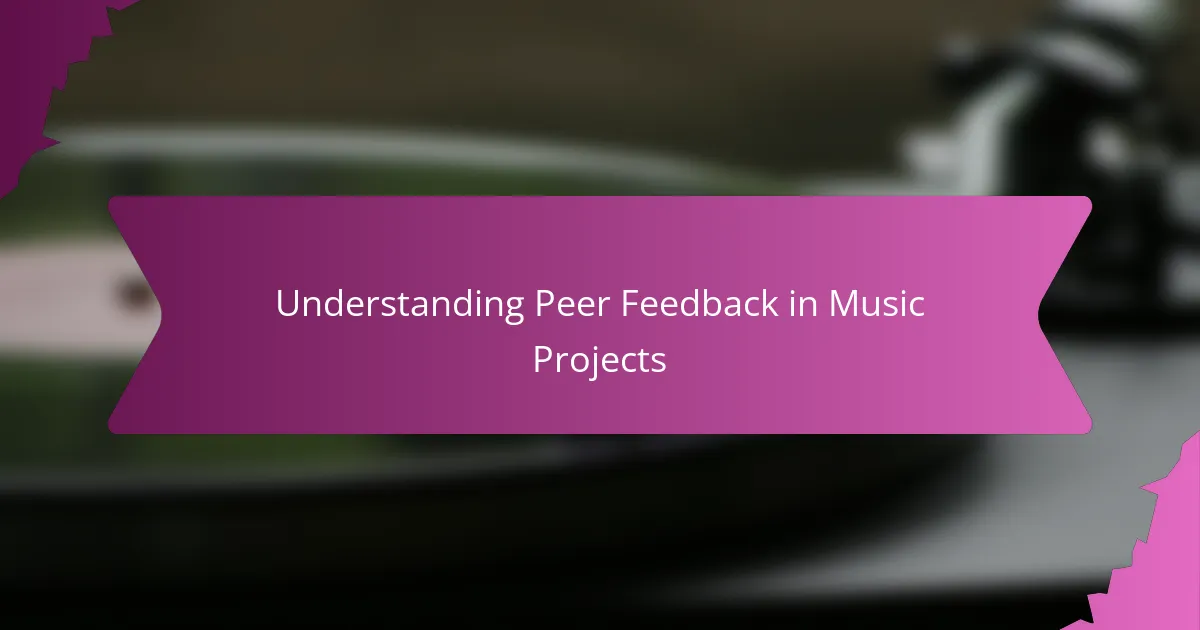
Understanding Peer Feedback in Music Projects
When I first started sharing my music with peers, I quickly realized that feedback wasn’t just about fixing mistakes—it was about gaining new perspectives. Have you ever noticed how your own ears get tired after hours in the studio? That’s where honest input from others becomes invaluable, offering fresh insights that can completely transform a track.
What struck me most was how peer feedback often reveals emotions within the music that I hadn’t fully recognized myself. It’s like holding up a mirror, but one that shows not just my technical work, but the feeling behind it. This emotional connection, brought out by others’ reactions, helped me understand the impact my music truly had.
I’ve learned that understanding feedback means knowing it’s a dialogue, not a verdict. Have you ever felt guarded when someone critiques your art? Opening up to peers’ viewpoints requires trust and courage, but it’s in this exchange that growth happens. Without that, the project risks becoming a solo echo chamber, missing out on richness and depth.

Choosing Peers for Constructive Input
Choosing peers for input wasn’t something I took lightly. I asked myself, who listens not just with their ears, but with an open heart and a critical mind? It had to be people whose opinions I trusted—those who cared about the music as much as I did, not just casual listeners.
I remember sending a rough cut to a fellow musician whose taste I respected. Their feedback was honest but kind, highlighting both strengths and areas to improve. That balance made all the difference, because I wanted input that challenged me without discouraging me.
Sometimes, it’s tempting to gather as many opinions as possible, but I found that quality beats quantity every time. What good is feedback if it’s vague or biased? Selecting peers who understand the genre and the emotion behind the project ensured I received reflections that truly pushed my music forward.
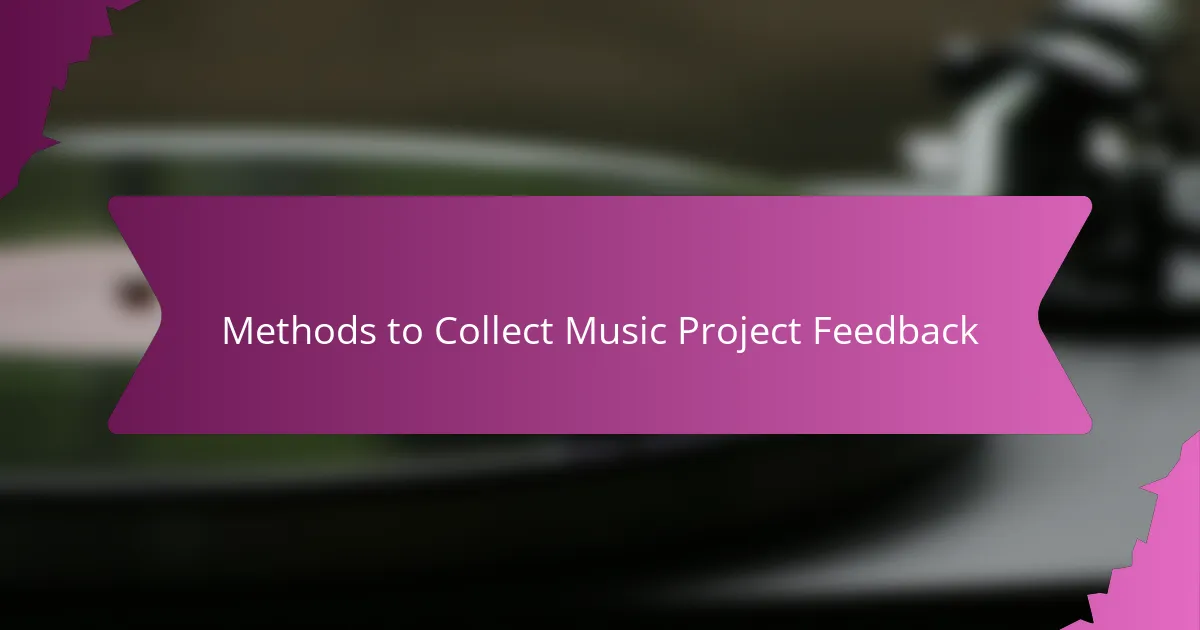
Methods to Collect Music Project Feedback
When I first started collecting feedback, I relied heavily on in-person listening sessions. There’s something about sitting together, sharing the moment, and watching faces as the music plays that reveals so much more than words alone. Have you ever noticed how a simple nod or raised eyebrow can speak volumes about what someone feels in that instant?
I also turned to digital methods like shared playlists and comment threads. This approach gave peers the time to digest the music fully and respond thoughtfully. It was surprising how written feedback often dug deeper, uncovering details that a quick in-person reaction might miss.
One method that truly stood out for me was using structured feedback forms with specific questions. Asking focused things like, “Which section moved you the most?” or “What surprised you about this track?” helped peers organize their thoughts clearly. It became a tool not just for critique, but for meaningful conversation about the emotions and technical choices behind the music.
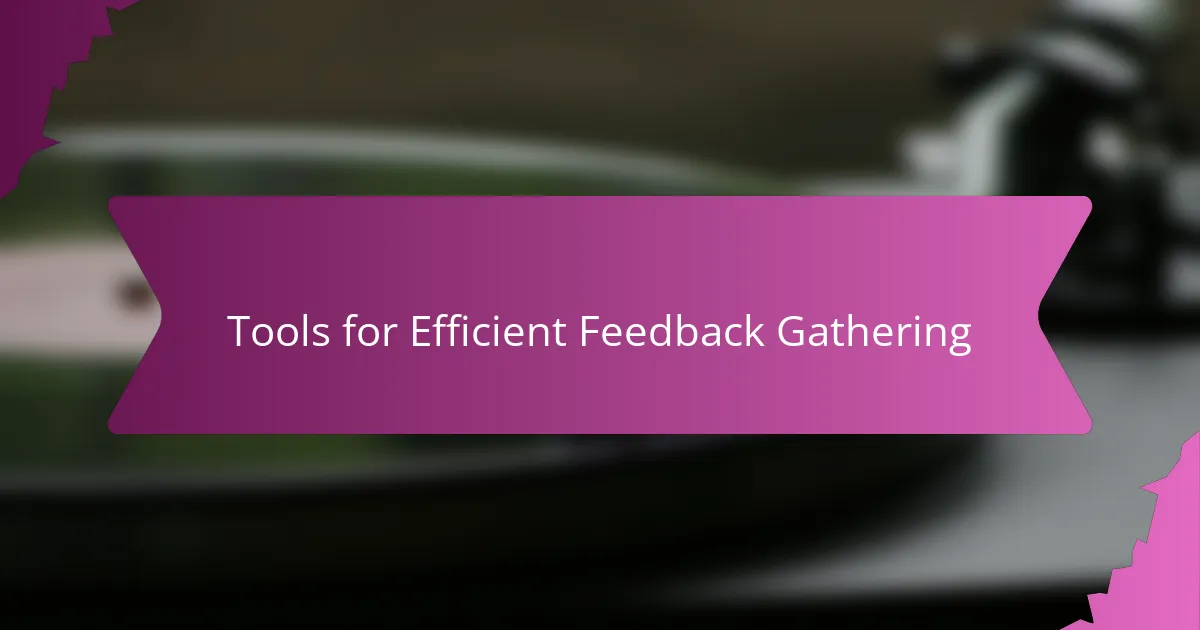
Tools for Efficient Feedback Gathering
When I started using dedicated tools like Google Forms and collaborative platforms such as SoundCloud, I noticed a shift in how efficiently I collected feedback. These tools allowed my peers to leave time-stamped comments, which made pinpointing specific moments in a track much easier. Have you ever tried to explain “that part right after the bridge” without a direct reference? Tools like these eliminate that confusion instantly.
I also found that integrating messaging apps with voice note features created a more dynamic feedback loop. Hearing a peer’s real-time reaction or their singing along took the process beyond text and made it feel more personal. It’s funny how a quick voice note can carry the enthusiasm or hesitation behind the critique better than any written words ever could.
Another gem for me was using shared online documents where peers could add notes and suggestions asynchronously. This setup gave everyone the space to reflect and respond thoughtfully without the pressure of immediate replies. Have you experienced how having that breathing room can transform shallow remarks into genuinely insightful feedback? For me, it was a game-changer in deepening the dialogue around my music.
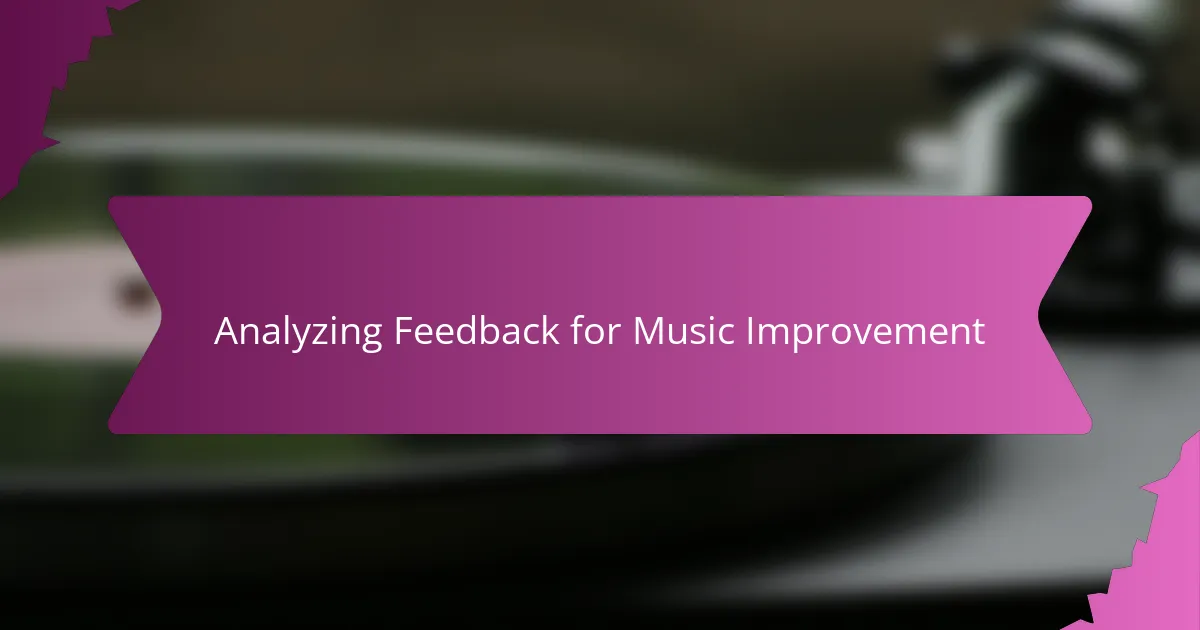
Analyzing Feedback for Music Improvement
When I sit down to analyze feedback, I try to read between the lines, looking not just at what’s said but how it’s said. Have you ever noticed how some comments focus on technical details while others reveal emotional reactions? Balancing these viewpoints helped me decide what changes would truly enhance the feeling of the track without losing its original spirit.
I remember a time when a peer pointed out that a melody felt “empty,” which initially frustrated me because I had poured so much into it. But stepping back, I realized they were highlighting a space where the music needed more texture or variation. That insight pushed me to experiment with layering and dynamics, which gave the piece much richer life than before.
Analyzing feedback also means recognizing patterns. When multiple peers highlight the same issue, it’s a clear signal something needs attention. Have you ever found yourself dismissing one-off critiques? I used to, until I learned that consistent themes in feedback point to those subtle flaws you might have missed. It’s a bit like tuning an instrument—small adjustments collectively create a perfect harmony.
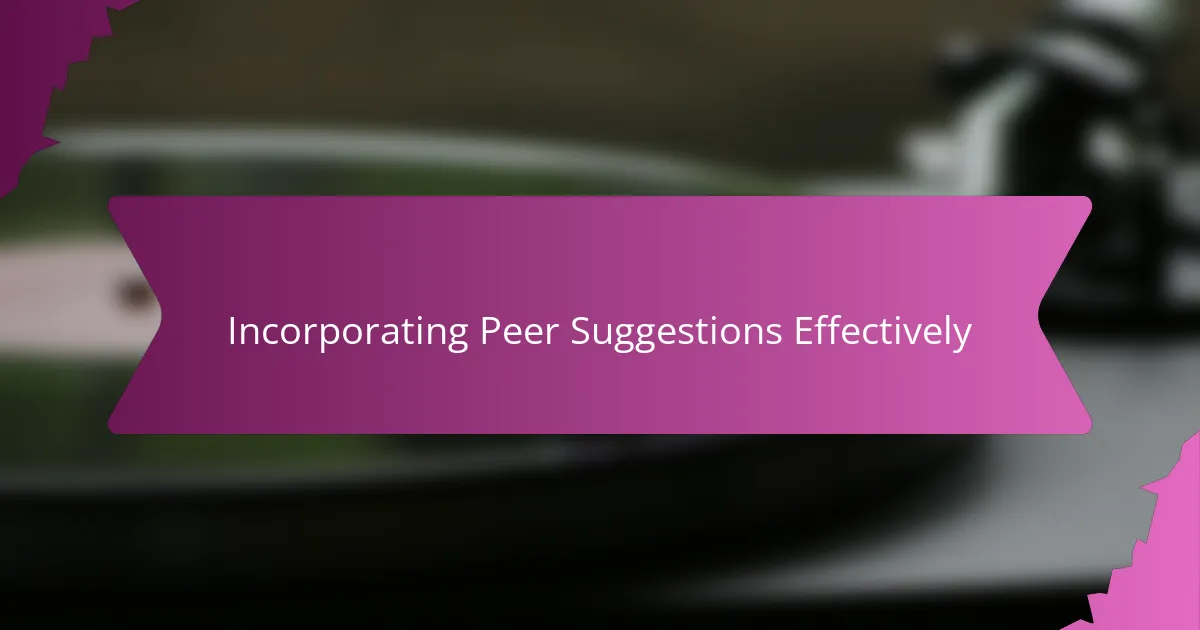
Incorporating Peer Suggestions Effectively
Incorporating peer suggestions effectively means more than just ticking off a list of changes. I’ve found that it’s crucial to weigh each piece of advice against my original vision and the emotion I want the music to convey. Have you ever tried changing something because it was suggested, only to feel the track lost its soul? That tug-of-war between staying true and evolving taught me to pick suggestions that genuinely enhance the music’s impact.
Sometimes, implementing feedback requires a bit of creativity and experimentation. For example, a peer once suggested adding a subtle harmony in a section I thought was complete. Instead of a quick fix, I played around with different instruments and rhythms until it felt natural and added that extra layer of depth. This trial-and-error process helped me embrace feedback as a tool for exploration rather than just correction.
I also learned the importance of communicating back to my peers about how their suggestions influenced the project. Sharing what I adopted or adapted—not only showed them their input mattered but also sparked new conversations that deepened my understanding. Have you noticed how feedback becomes even more valuable when it opens a two-way street? That ongoing dialogue transforms suggestions from static comments into lasting creative energy.

Lessons Learned from Peer Feedback Experiences
One of the biggest lessons I learned from peer feedback is how vital it is to separate my ego from the process. Have you ever felt that sting when someone points out something you missed? At first, it felt like a personal critique, but over time, I realized that their honesty was actually a gift pushing me toward growth I couldn’t achieve alone.
I also came to appreciate that not all feedback needs immediate action. Sometimes, sitting with a comment for a few days revealed layers I hadn’t noticed initially. For example, a peer once suggested cutting a favorite chorus section, and while I resisted at first, giving myself space helped me understand why that change made the song stronger and more focused.
Lastly, it became clear to me that feedback is a conversation rather than a checklist. Do you recall those moments when a casual remark sparked a whole new idea? Engaging with my peers about their thoughts turned simple critiques into collaborative breakthroughs, making the music richer and the creative journey far more rewarding.